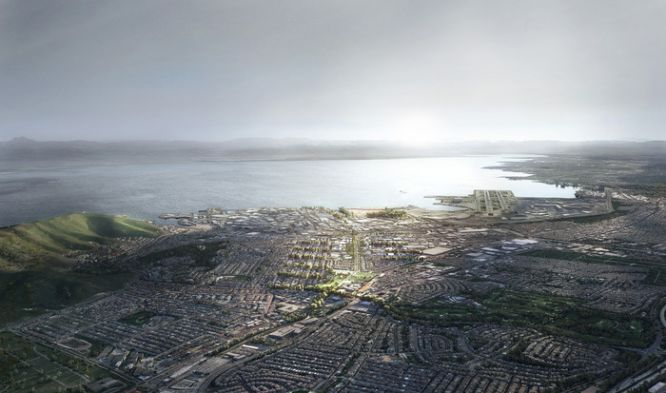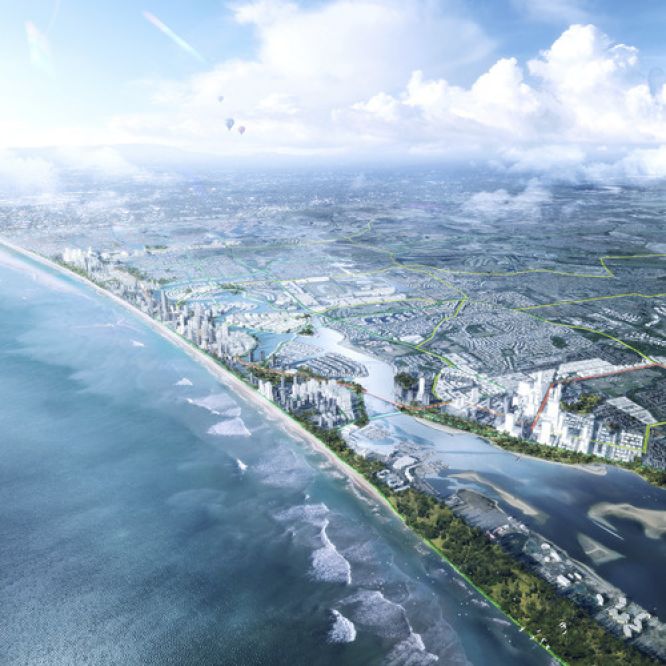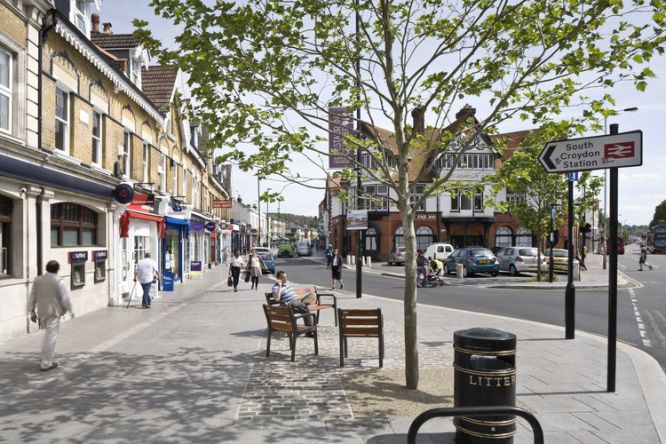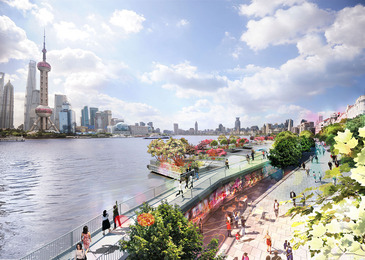Resilient South City, San Francisco
500mi / 800km of shoreline
HIGHLIGHTS
- Re-imagines a series of San Francisco waterfront communities as vibrant, public places for everyday use – but also vital for environmental and emergency needs.
- Developed for the Resilient by Design Bay Area Challenge, a research and design project that has community and government stakeholders working with local, national and international experts on the challenges of climate change and ecological disaster around San Francisco Bay
- This proposal envisions a network of green spaces, creeks and revived high streets serving as points of collection, connection and water management – from the ridgeline to the shoreline and across the bay via an enhanced ferry network.
“The can-do pragmatism of Collect & Connect – Resilient South City is complemented by an aspect of poetic ecological thinking – a wide-angle approach that links the area’s mountain to its city and its bay … it looks up as well as looking down.”
Sarah Ichioka, Desire Lines
View project

Millennium Parklands, Sydney
500ha
HIGHLIGHTS
- The centrepiece of the ‘green games’ and a benchmark in post-industrial restoration, transforming a former industrial site into the site of the 2000 Sydney Olympic Games
- Restored the ecological processes of Homebush Bay’s lowlands into functioning waterways and wetlands, reflecting a commitment to conservation
- Many of the project’s innovations have now become normal practice, such as the preparation of the park’s activity based programs in tandem with its physical design.
“Almost fifteen years on from the concept plan, the Millennium Parklands have proven to be a success. They have reinvented what was a highly contaminated site into well-used and well-loved parkland … today Millennium Parklands is used and loved by the community.”
Landscape Architecture Australia

Huangpu East Bank Urban Forest, Shanghai
21km
HIGHLIGHTS
- Proposed a 2-million tree forest – 1 for each child – at the heart of a 25-year plan for an emerging world city
- 50 local schools would become custodians of the forest, within new outdoor classrooms and through treeplanting events
- Our master plan framework outlined key structuring elements (such as street and pedestrian connections, transport interchanges and major public spaces), plus strategies for the delivery of individual projects, spaces and buildings.
- 25% more green space and better air quality
Countless new places for Shanghai’s people to immerse themselves in nature.
View project

Gold Coast City Strategy 2031, Queensland
2,000ha
HIGHLIGHTS
- An integrated design framework to reposition one of Australia’s fastest growing and climatically vulnerable cities
- Plans around nine key strategic ideas expressed as three primary areas for action
- Acknowledged as a milestone study of integrated transport and land use planning – fundamental to a more resilient future.
“The study tackles head on the issue of traffic dominated thoroughfares, to advocate for the pedestrian experience on cooler, greener and more attractive streets.”
Australian Institute of Landscape Architects 2014 National Awards jury
View project

Croydon South End High Street, London
1km
HIGHLIGHTS
- Commissioned by local council to re-establish the high street as a place of enterprise and community
- Transformed a vacant tenancy into the ‘South End Ideas Shop’ – a hub to shape the community’s vision for the street
- Improved tired shopfronts, pedestrianised and planted the street, and created a ‘Meanwhile Toolkit’ of pop-up uses to bring shops back to life
- Shop vacancies reduced from 25% to just 5%
- Increase in restaurant license and planning applications that take dining into the public realm
- Local pride seen in positive feedback from businesses and residents to Council
“Playful and well done … a lovely little vignette. Suddenly it becomes a place where you might want to loiter rather than hurry along.”
Amanda Levete, Royal Institute of British Architects MacEwen Award jury member
View project







